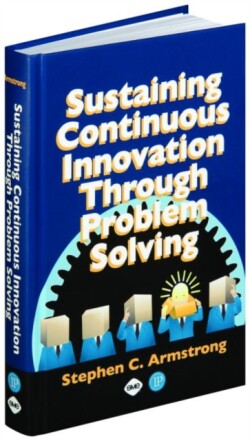This book demonstrates how Problem Solving and Process Management is at the heart of continuous business transformation. Logically organized in four parts, it introduces the reader to the domains of change and the process management body of knowledge (BOK) and gives detailed instruction on how to creatively re-engineer processes, sustain innovation and continually improve an enterprise through proven repetitive methods. And unlike any book on the subject it offers a practical step-by-step approach that includes the steps, the templates, and the metrics to keep it on track.
- Features a tried and tested, practical 17-step “how to” Problem Solving and Process Management methodology that can be used in any business environment.
- Includes numerous figures and examples of charts and documents used at each step of the process.
- References standard forms, tools, and training materials in the Appendix.
- Addresses how to engage the people who are using, creating, and improving the management process.
- Explains the steps in creating a process management methodology and presents the process management body of knowledge without the “fad” or spin.
- Highlights the importance of good process management to corporate business transformation.
Part I: Transforming the Business - Achieving a Culture of InnovationAn Introduction to Business Transformation-The Methodology & Philosophy The Phases of Business Transformation Explained - Laying the Foundation for Continuous Innovation The Organizational Approach to Business Transformation
Part II: Analyzing the Status Quo - By Constantly QuestioningHow to Analyze the "As Is" Business Processes Research Customer Needs and ExpectationsSelect the IssueDefine/Design the ProcessEstablish Standards and Design Performance MeasuresImplement the Processes, Standards, Measures, and Quality SystemsConfirm the Process/Issue FocusSet the Improvement Objectives and Schedule
Part III: Continuous Innovation - By Problem SolvingCreative Process ImprovementCause and Effect AnalysisGathering and Analyzing Root Cause DataSelecting the Root Cause to be AddressedFormulate Alternative SolutionsEvaluate and Select the Best SolutionDocument SolutionsInvestigate and Validate the SolutionClosing the Loop through Continuous Improvement
Part IV: Engaging the People - Sustaining InnovationManaging Process Improvement Teams - Making it WorkSustaining Innovation with a Higher Purpose
Appendices - Management Tools

















